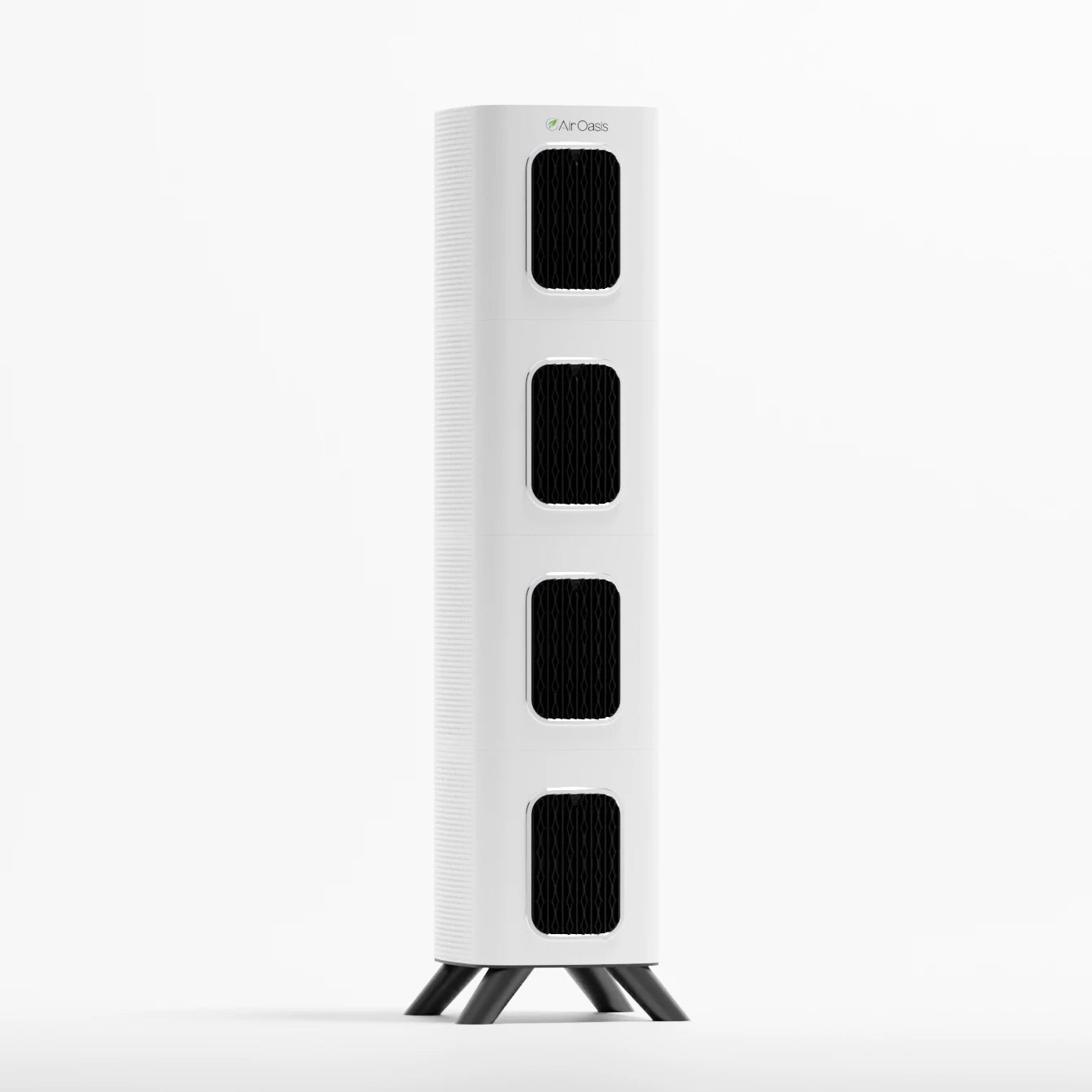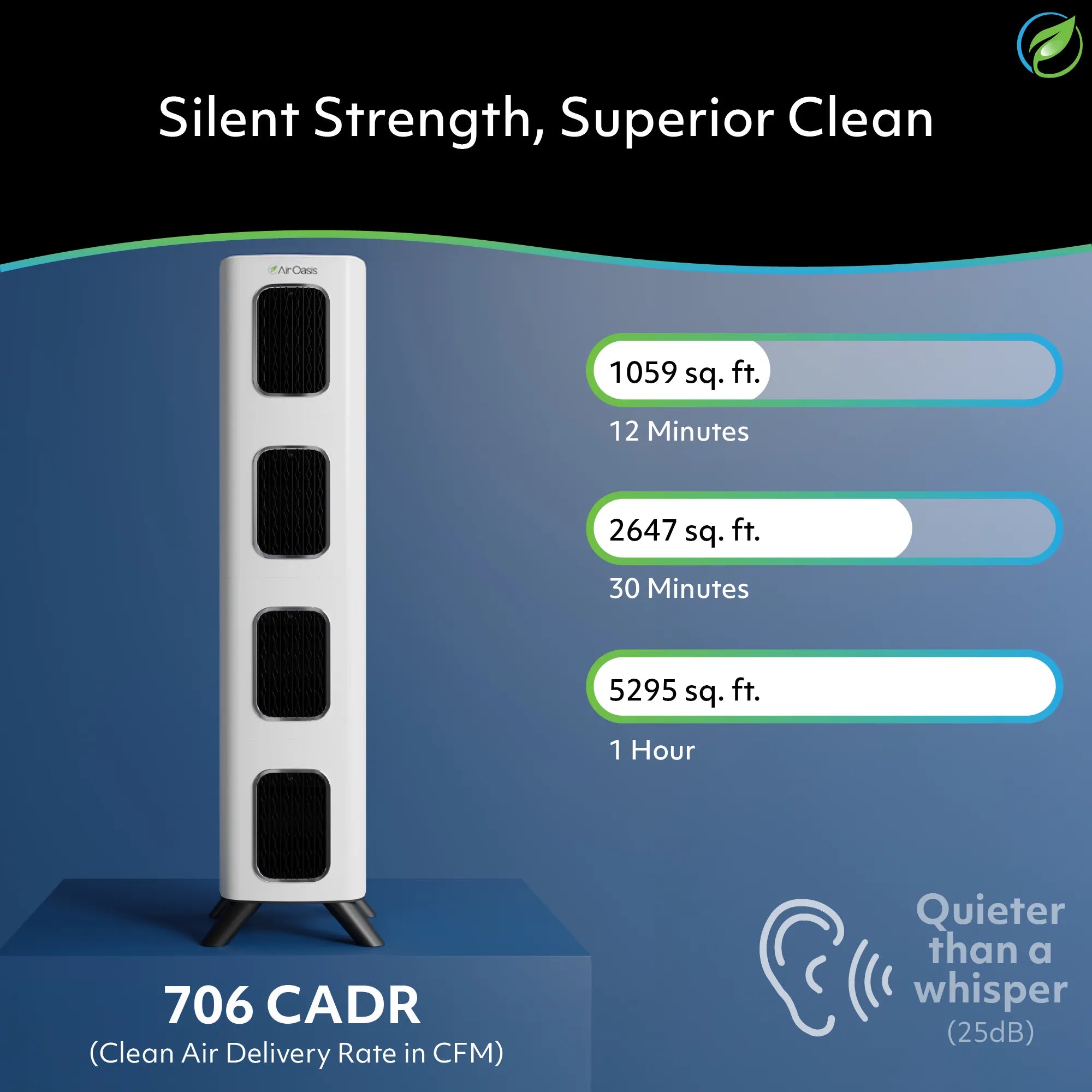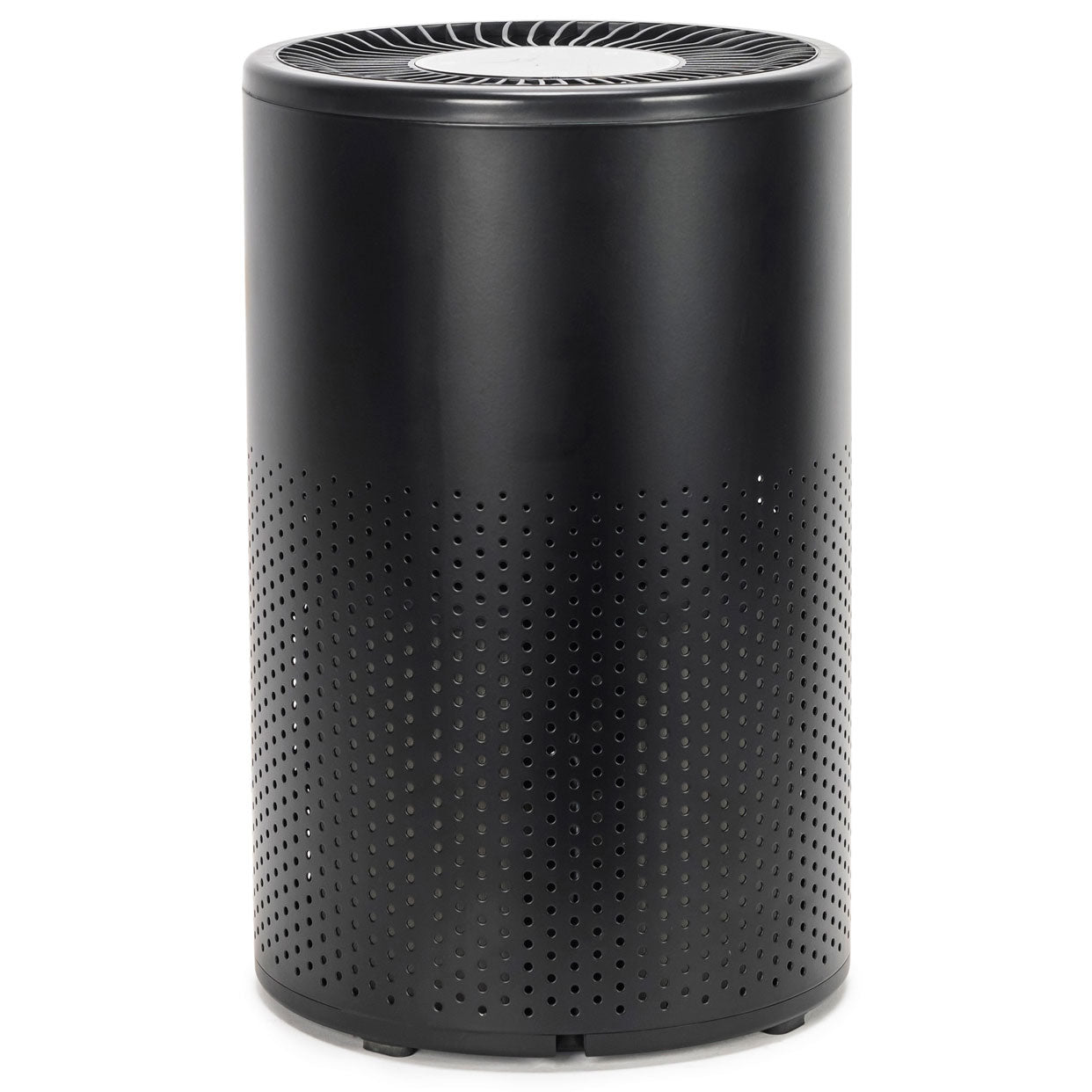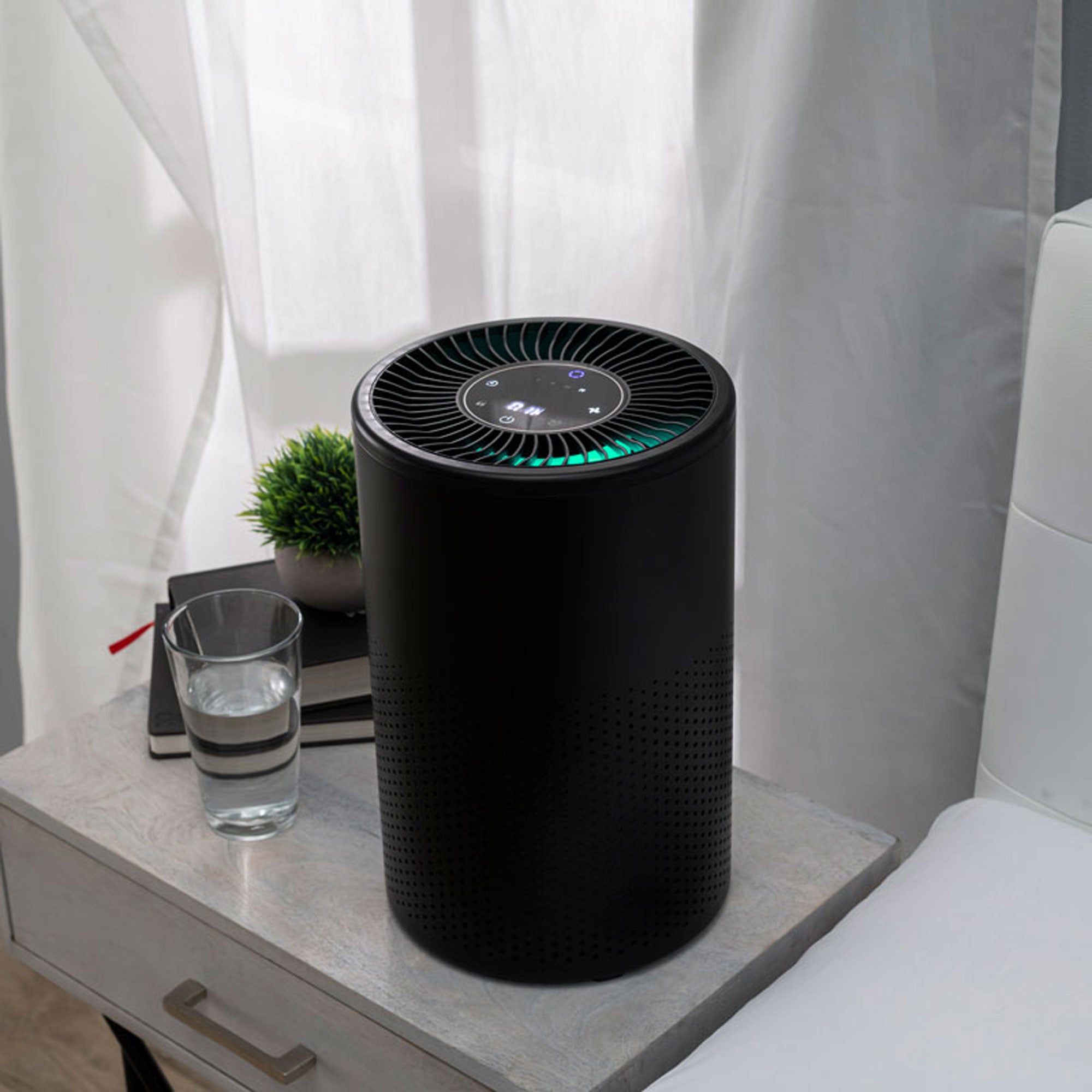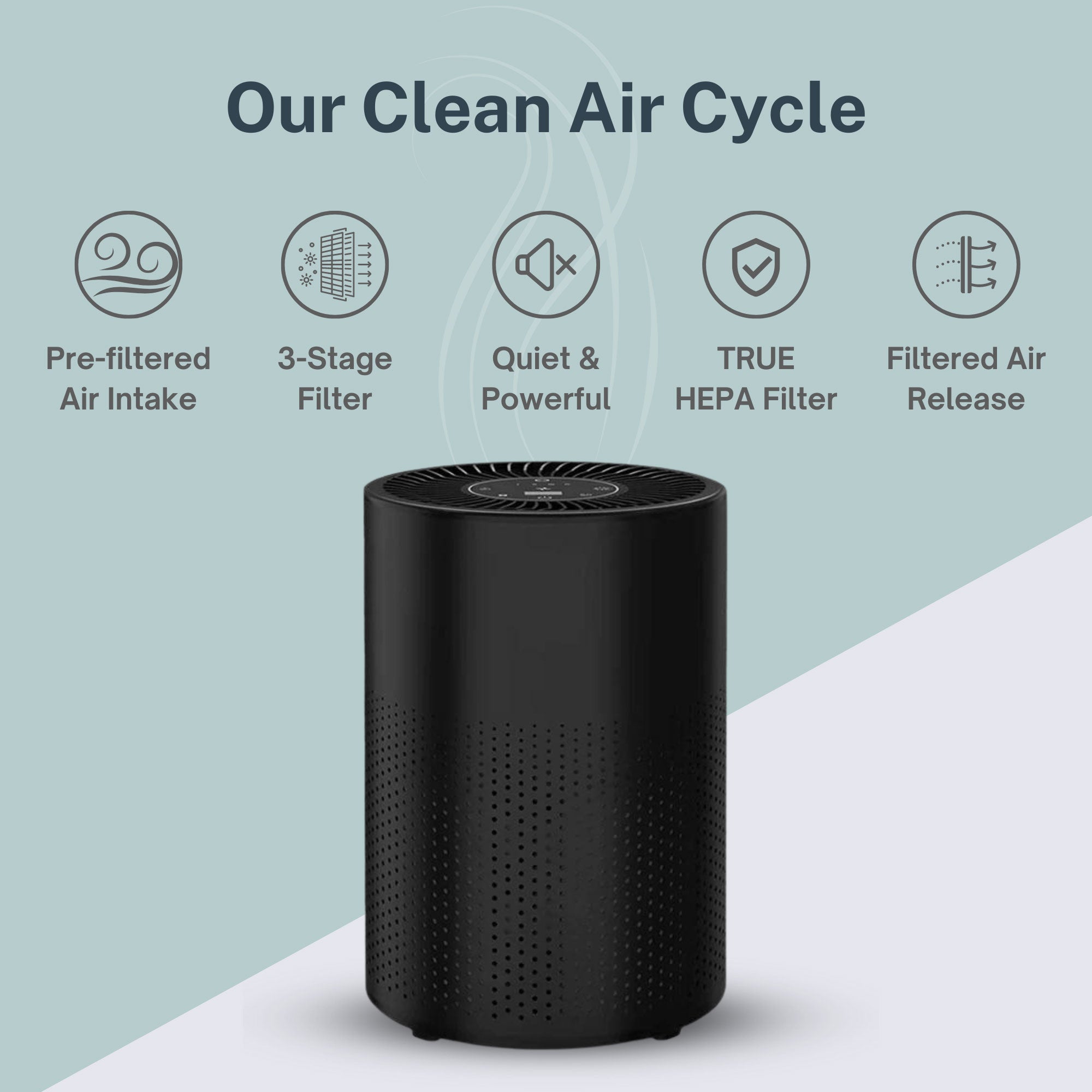A once-in-a-century global pandemic makes people reconsider what they know and how they operate around airborne viruses.
A virus needs to spread if it hopes to survive. Without a new host, most viruses die off once the body's immune system goes to work. A virus gains the momentum needed to mutate and grow stronger by spreading.
With the cold and flu season on its way, and the COVID-19 season seemingly year-round, let's dive deeper into what you need to know about airborne viruses to stay healthy this fall.
Are you concerned about your air quality at home? A HEPA air-purifier can make your home safer by eliminating viruses from the air and preventing airborne diseases from spreading.
Airborne and Direct Contact Diseases
Easily transmittable diseases fall into two categories – airborne and contact diseases. It's important to understand the difference between these two categories and how that impacts the spread of viruses in the air.
What is an Airborne Disease
Airborne diseases can include viruses, bacterial infections, and fungi. An airborne virus can be transmitted via mist, dust, aerosolized particles, and liquids.
Regarding airborne particles, they come from the source of the infected person. This means that microbes are discharged from an infected person when they sneeze, cough, or laugh and through close personal contact.
Airborne diseases can also be spread through touching contagious secretions. Coughing on your hand and touching an item creates an exposure risk to anyone interacting with that item later. One thing to note is that illnesses caused by air pollution, poisons, and smog, are not considered airborne diseases.
Staying home when sick can significantly reduce the spread of airborne viruses. Before the pandemic, it wasn't uncommon to hear a coworker in the next cubicle spend the workday sniffling, sneezing, and coughing. After a few days, you would also show up at the office sniffing and sneezing. Eventually, everyone in the department catches the virus and gets sick.
Fortunately, COVID-19 has changed the conversation about how illnesses in the workplace are treated and what steps people should take to limit the spread of viruses. Wearing a mask, covering your mouth and nose when sneezing or coughing, and thoroughly washing your hands can all work to limit the transmission of airborne diseases.
Direct Contact Diseases
Conversely, direct contact diseases are spread through direct physical contact. An infected individual having direct bodily contact with an uninfected person can spread this type of disease, as can having contact with an infected person's environment or personal items.
Examples of direct contact diseases include the following:
- Salmonella
- Scabies
- Shigella
- Pressure ulcers
Airborne Viruses: Types
Airborne viruses don't cause all of the illnesses you experience. You can get sick from something you ate, an item you touched, or an environmental factor like mold or whatever has been growing in that old to-go container sitting at the back of your fridge for the last six months.
There are several diseases you can contract after exposure to airborne particles, the most common include:
- Common cold - Caused primarily by rhinoviruses, the common cold can take many forms. While many people believe that cold weather causes the common cold, this isn't true. Colds often occur during the fall and winter but this is due to other factors like increased indoor socialization and schools being in session.
- Chickenpox - Often occurring in childhood, chickenpox is caused by the varicella virus. Even though it can be spread through direct contact, the disease is considered airborne.
- COVID-19 - The SARS-CoV-2 virus, which causes COVID-19, is airborne. The US Environmental Protection Agency provides information and precautions related to the transmission of SARS-CoV-2 virus and COVID-19. EPA recommends increasing ventilation and improving air cleaning systems, in addition to social distancing and mask wearing to prevent the spread of Sars-CoV-2 via airborne particles.
- Whooping cough - This is caused by an airborne bacterial infection, Bordetella pertussis. According to the Center of Disease Control (CDC), "...bacteria attach to the cilia (tiny, hair-like extensions) that line part of the upper respiratory system. The bacteria release toxins (poisons), which damage the cilia and cause airways to swell."
- Tuberculosis - TB is a bacterial infection that primarily impacts the lungs. It is considered airborne because it is spread through coughing and sneezing. In fact, TB can remain infectious by surviving in the air for about 3 months, according to Hopkins Medicine.
- Mumps - Mumps is caused by an airborne virus that is more commonly contracted during childhood. Children can have few to no symptoms when contracting the virus, but in adults, mumps can lead to meningitis, pancreatitis, and even deafness.
-
Measles - The virus that causes the measles is called Rubeola, and it is considered a highly contagious airborne virus.
While you may recognize most of these viruses, one common disease you may have noticed that didn't make the list is influenza, also known as the flu. That's because the medical community is split on whether influenza transmits through the air.
How Airborne Diseases (Bacteria or Viruses) Spread
Contracting a disease can happen in various ways, but the least predictable method is through airborne transmission. Fortunately, very few diseases are transmittable through the air.
To hop from one host to the following, airborne diseases cling to respiratory droplets and dust particles that hang in the air. Moving on air currents, these particles can travel through ventilation ducts, doorways, and hallways, making it possible for you to contract an airborne virus without ever coming into contact with the infected individual.
Transmission of an airborne virus can occur over long distances and extended periods. If someone with a virus walks into a room, coughs, and then leaves, the virus can remain infectious for a period of time and continue to increase the risk of contracting infectious diseases.
Even if you enter the room several minutes later, you could still inhale the infected particles lingering in the air or clinging to the walls of the room and becoming sick. This makes proper ventilation and air purification key to preventing the spread of airborne viruses.
Preventing the Spread of Airborne Viruses
Quality ventilation alone is not enough to eliminate the spread of all airborne viruses. Additional precautions, such as air purifiers, are recommended.
Air Purifiers and Airborne Diseases
Air purifiers work to clean the air you breathe by pulling in and removing dust particles and respiratory droplets. The viral pollutants lingering in the air is part of what causes the spread of airborne viruses, so removing them is crucial.
HEPA (High-Efficiency Particulate Air) purifiers perform exceptionally well at removing airborne viruses. Numerous studies have proven the effectiveness of HEPA purifiers in helping to reduce the spread of COVID-19 due to Sars-COV-2. HEPA purifiers pull in air and filter it through a complex system. The purifier uses glass fibers that capture large particles, such as dust, mold, and other allergens while allowing clean air to pass through.
Air ionizers are another highly effective air purifier that works a little differently. Rather than pulling in large particles, the best air ionizers use Advanced Hydrated Photocatalytic Oxidation to release ions into the air. In this process, the ionizer shines a UV light on a catalyst coated with titanium dioxide, which creates charged ions called ionized hydroperoxides. When released into the air, these charged ions work to neutralize harmful contaminants and viruses.
Cold plasma air purifiers work similarly by producing both positive and negative ions. The makeup of these ions is similar to water, which enables them to separate and reform around harmful airborne particles. When ions form around viruses and toxins, they become trapped within the plasma filter, removing them from the air.
Air Purification for Viruses… and More
At Air Oasis, we have a comprehensive range of air purification products to majorly reduce airborne viruses and bacteria. Improving the indoor air ventilation in conjunction with taking other precautions - including mask wearing, staying home when ill, and covering your mouth when you sneeze or cough - decreases the rate of airborne disease transmission. Shop our air purifiers for viruses here to breathe easier and stay healthy.


































